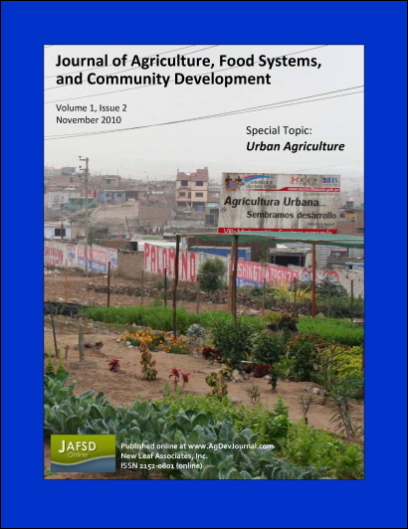Creating a Legal Framework for Urban Agriculture: Lessons from Flint, Michigan
DOI:
https://doi.org/10.5304/jafscd.2010.012.007
Keywords:
Urban Agriculture, Community Food System Planning, Urban Planning, ZoningAbstract
Urban agriculture is not new to Flint, Michigan. Like most cities around the world, Flint has been home to back yard and small community gardens throughout its history. Today, over 150 churches, shelters, and neighborhood block clubs grow vegetables in the city. As the most recent wave of interest in urban agriculture swelled in Flint, however, many enterprising gardeners encountered city ordinances that barred certain activities and failed to define land uses common for small-scale food production. As a result, advocates pressed the Flint Planning Commission to change codes in order to enable a wider range of agricultural activities within the city limits. This case study highlights how the legal framework in Flint discouraged efforts to expand the scope of community gardening and how local nongovernmental organizations intervened, opening a vibrant public dialogue about urban agriculture. We discuss the importance of public input and education in efforts to amend city policies to support a range of urban agricultural activities, outline the strategies used in Flint, and identify some of the challenges that arose in this process.
Metrics
Downloads
Published
How to Cite
Issue
Section
License
The copyright to all content published in JAFSCD belongs to the author(s). It is licensed as CC BY 4.0. This license determines how you may reprint, copy, distribute, or otherwise share JAFSCD content.













